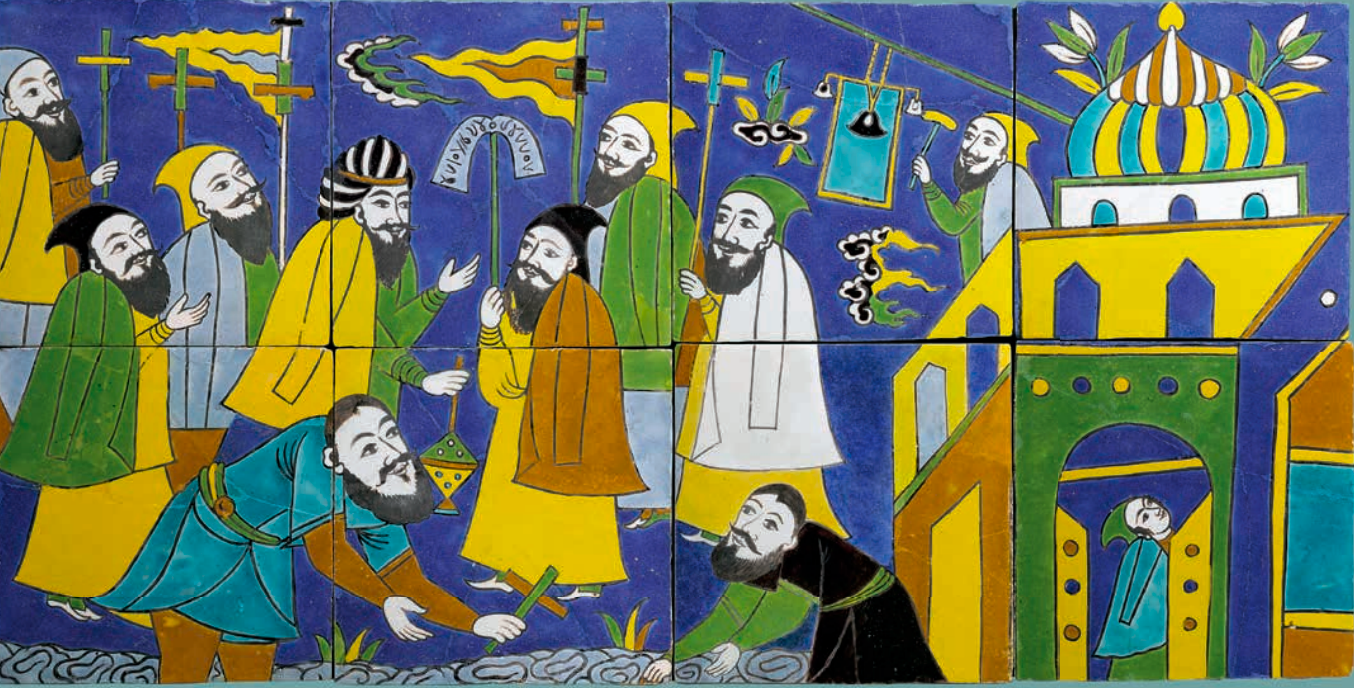

The Paper has learned that the "Top of the Pyramids: Ancient Egyptian Civilization Exhibition" will open on July 18 at the People's Square of the Shanghai Museum and will be open to the public on July 19. The exhibition will bring together 492 groups of 788 precious cultural relics from different periods of ancient Egyptian civilization, plus several Chinese cultural relics on display, and the number of exhibits is expected to exceed 800.
"If visitors stop at each artifact for 10 seconds, it will take two hours to see the entire exhibition; if they stop at each artifact for 30 seconds, it will take six hours to see the entire exhibition." Chu Xiaobo, director of the Shanghai Museum, said at the promotion meeting, "Come to the Shanghai Museum to see the Egyptian exhibition, you will not be able to leave for the whole day and will be reluctant to leave the exhibition hall."
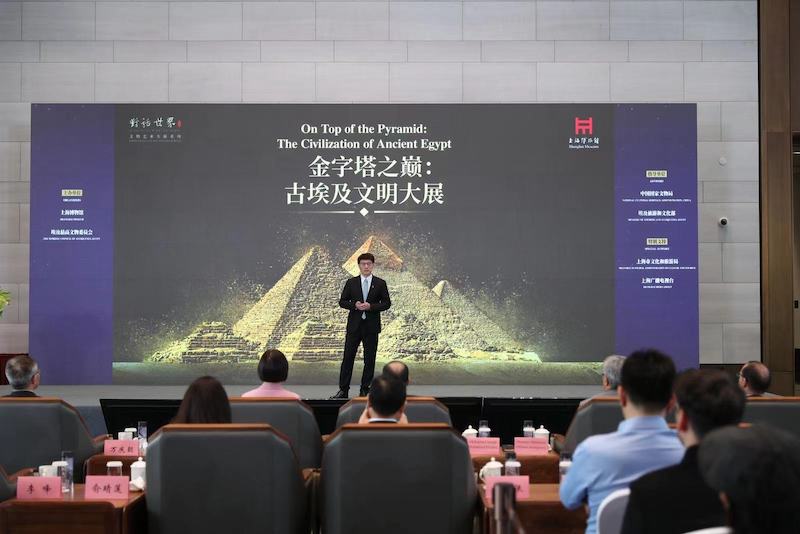
Promotion site
As the world's largest and Asia's highest-level overseas exhibition of ancient Egyptian cultural relics, the exhibition will unfold independent narratives through three topics: "The Kingdom of the Pharaohs", "The Secret of Saqqara" and "The World of Tutankhamun", interpreting the profound connotation of ancient Egyptian civilization from different angles.
On May 20, as the fourth exhibition in the Shanghai Museum's "Dialogue with the World" series of cultural relics and art exhibitions, "Top of the Pyramids: Ancient Egyptian Civilization Exhibition" held a promotion meeting in the World Living Room. In his on-site speech, Chu Xiaobo, director of the Shanghai Museum, combined pictures, texts and videos to reveal many highlights of the exhibition. Early bird tickets for this exhibition have also been officially sold to the public, and visitors can learn about specific ticket information through the Shanghai Museum's official WeChat applet.
"Each artifact takes 30 seconds to see, and it takes 6 hours to see the entire exhibition"
In people's impression, ancient Egypt is full of mystery. The sacred space created by the pyramids and temples, and the magnificent murals buried in the Valley of the Kings and the tombs of nobles, together build the eternal myth of ancient Egyptian civilization. The "Top of the Pyramids: Ancient Egyptian Civilization Exhibition" to be exhibited at the Shanghai Museum will bring the public a comprehensive journey of ancient Egyptian civilization through a general history and two special topics.

The Three Great Pyramids of Giza, Egypt
The exhibition unfolds an independent narrative through three sections: "The Kingdom of the Pharaohs", "The Secrets of Saqqara" and "The Age of Tutankhamun". It brings together 492 groups of 788 precious cultural relics from different periods of ancient Egyptian civilization, including statues of pharaohs such as Tutankhamun, Amenemhat III and Ramses II, a set of mummy coffins, the queen's gold ornaments, as well as newly discovered painted wooden coffins, animal mummies and statues in the Saqqara area and other heavyweight exhibits.
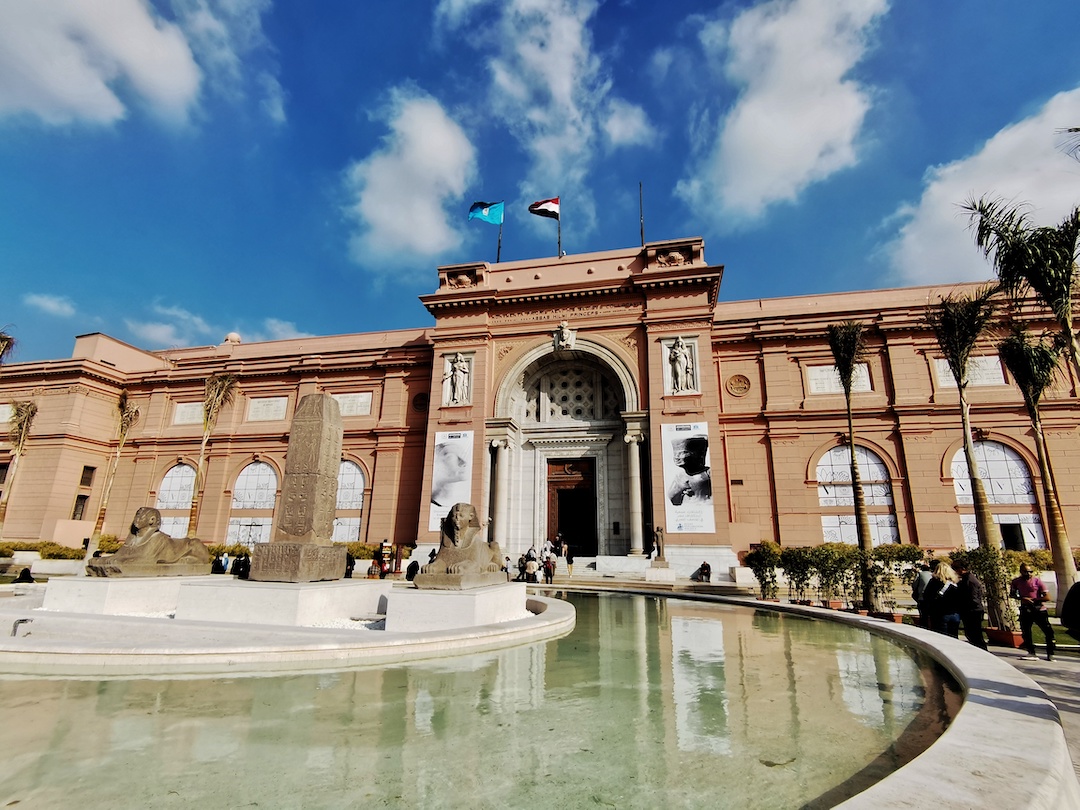
National Egyptian Museum
These cultural relics are selected from the latest archaeological discoveries in seven major Egyptian museums, including the Egyptian National Museum, Luxor Museum, and Suez Museum, as well as in the Saqqara region. More than 95% of these cultural relics are in Asia for the first time. The exhibition will also select a number of Chinese cultural relics to be displayed together with Egyptian cultural relics to explore the understanding of different civilizations on the eternal proposition of mankind.
"Including the Chinese cultural relics on display, the exhibits of this exhibition will exceed 800 cultural relics." Chu Xiaobo said, "I have done the math for you. If visitors stay at each cultural relic for 10 seconds, it will take two hours to see the entire exhibition; if they stay at each cultural relic for 30 seconds, it will take six hours to see the entire exhibition. You will not be able to leave the Shanghai Museum for the whole day and will be reluctant to leave the exhibition hall."
Create multiple "ever"
At the promotion meeting, Chu Xiaobo shared the highlights of the exhibition and mentioned many of the exhibition’s “unprecedented” innovations.
This exhibition will be the world's largest and Asia's highest-level exhibition of ancient Egyptian artifacts exported abroad, and it will also be the first time that a Chinese official museum has cooperated with the Egyptian government. "Unlike many major exhibitions that travel around the world, this ancient Egyptian civilization exhibition, which combines three themes, will only be held at the Shanghai Museum. It is expected to attract many Asian and even global audiences to come and 'check in'."
This exhibition is also the largest and longest special exhibition in the history of the Shanghai Museum. The Shanghai Museum will renovate and open three exhibition halls on the first floor of the People's Square Museum. In the exhibition space with a total area of 3,000 square meters, it will create a unique immersive exhibition experience through exhibition narrative, cultural relics display and digital technology. The exhibition will last for nearly 13 months, until August 17, 2025.

Saqqara Archaeological Site
The second section of the exhibition, "Secrets of Saqqara", will focus on the major discoveries made by the Egyptian archaeological team since they launched independent archaeological excavations in the Saqqara area. The "Eternal Land" Saqqara archaeological excavation was selected as one of the top ten archaeological discoveries in the world in 2020. This exhibition is also the first large-scale centralized display of Saqqara archaeological findings in the world.
Chu Xiaobo also mentioned that this is not an imported exhibition, but an original exhibition that fully reflects the Shanghai Museum's planning. The exhibition will be independently planned by the Shanghai Museum, Peking University, and Shanghai International Studies University. "In order to gather so many cultural relics in the Shanghai Museum, the exhibits are transported by a special chartered flight from Cairo to Shanghai. This is probably unprecedented in the history of global exhibitions."
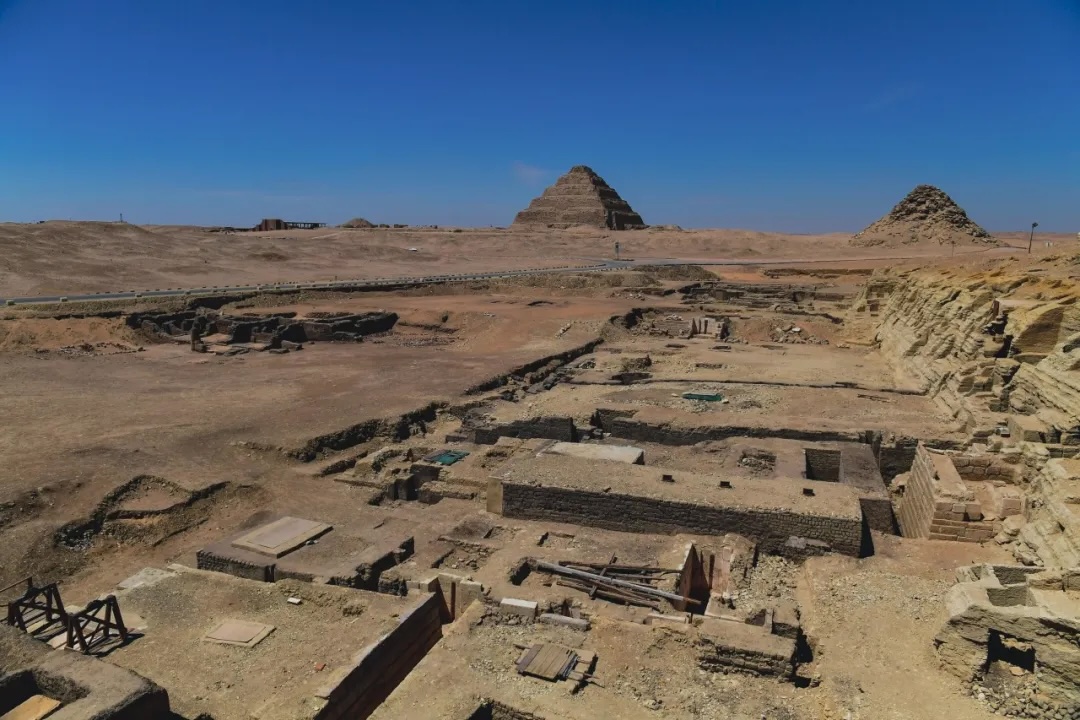
Saqqara archaeological site
At the promotion meeting, Chu Xiaobo also revealed two Easter eggs of the exhibition, which opened people's minds and could bring the museum closer to the audience of Generation Z. For example, the mobile game "Egyptian Cat Temple" developed in cooperation, "Long queues at the Shanghai Museum's exhibitions are already the norm. Visitors can play mobile games while queuing to relieve everyone's anxiety of waiting." What is even more mind-blowing is that in order to echo the many ancient Egyptian and cat-related cultural relics in the exhibition, the Shanghai Museum will launch the "Museum's Strange 'Meow' Night" special event for the first time, and visitors can bring their pet cats to the exhibition - this is a first in comprehensive museums around the world. At the same time, it will work with airlines, hotels, etc. to create a unique experience of "pet-friendly" flights, hotels and "cats" visiting museums. It is also very novel to think that in the near future, visitors will bring their cats to the Shanghai Museum to see the exhibition.
Exhibition highlights:
The exhibition unfolds an independent narrative through three sections: "The Kingdom of the Pharaohs", "The Secret of Saqqara" and "The Age of Tutankhamun", looking back on the long years nurtured by the great river, tracing the interweaving of mythology and the real world, gaining insights into the overall appearance and historical details of ancient Egyptian civilization, and interpreting the profound connotation of ancient Egyptian civilization from different angles.
Section 1: The Kingdom of Pharaoh
The view of order of binary opposition and unity, and the belief system of afterlife with the pharaoh as the core, are the most prominent background of ancient Egyptian civilization. "The Kingdom of Pharaoh" will be introduced with the reflection of the ancient Egyptians' cosmology rooted in the natural geographical environment - the world of gods, presenting a condensed history of ancient Egyptian civilization, discussing the ancient Egyptians' cosmic concepts, social order, writing, craftsmanship, burial customs, etc., covering all aspects from social system, daily life to the spiritual world. When order was born and royal power began to rise, the historical narrative of the Pharaoh era unfolded, and laid the spiritual tone for thousands of years thereafter; and in the last scene of the historical stage, the ancient Egyptian civilization merged into the wider world of the Mediterranean Sea through the Nile River, and was preserved forever in the integration with other civilizations.

Pottery jar with boats, animals and birds, Pottery, pigments, Predynastic period (c. 5300-3000 BC), National Museum of Egypt
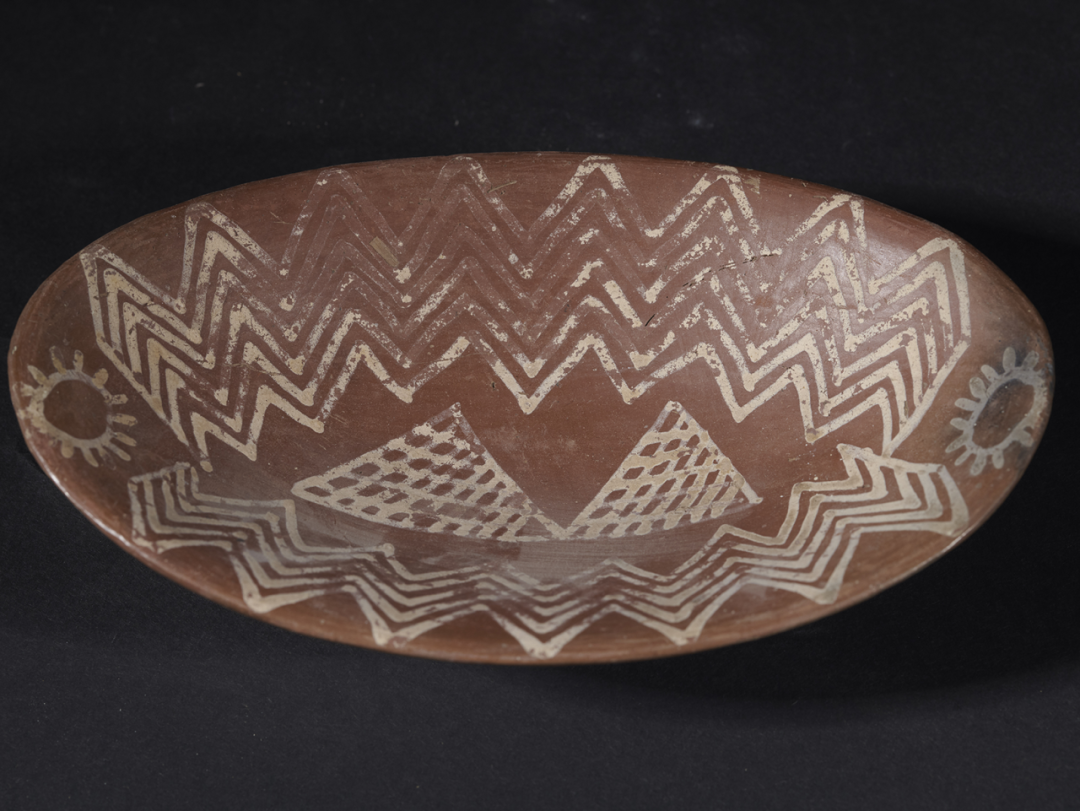
Water-patterned ceramic bowl, pottery, pigment, Predynastic period (c. 5300-3000 BC), Egyptian National Museum
This special topic will also select some Chinese cultural relics and display them together with Egyptian cultural relics to explore the understanding of different civilizations on the eternal proposition of mankind, so that we can re-understand ourselves in interpreting others. The exhibition will also include flashbacks to review the budding of Egyptology in modern China from the perspective of the development of the discipline, in order to trigger thinking about the modern transformation of the ancient civilization beyond the exhibition.

Water-patterned pottery jar, Pottery, Predynastic period (c. 5300-3000 BC), Egyptian National Museum

Standing Osiris, bronze, Late Egypt (664-332 BC), Egyptian Museum
Section 2: The Secret of Saqqara
The ancient Egyptians regarded Memphis as the beginning of their history. It is a holy place, a memory, and a true history of thought based on the two. Saqqara is the most important part of the entire Memphis cemetery - it is the oldest cemetery used by the ancient Egyptians for the longest time, with 15 pyramids from the 3rd to the 13th dynasties, and it is also a place where noble tombs and animal mummies are extremely densely buried. In 2020, the new archaeological discoveries in Saqqara, including the ruins of the temple of the cat goddess built in 600 BC and the intact remains in the underground tomb of the cat god priest, were listed as one of the top ten archaeological discoveries in the world that year.
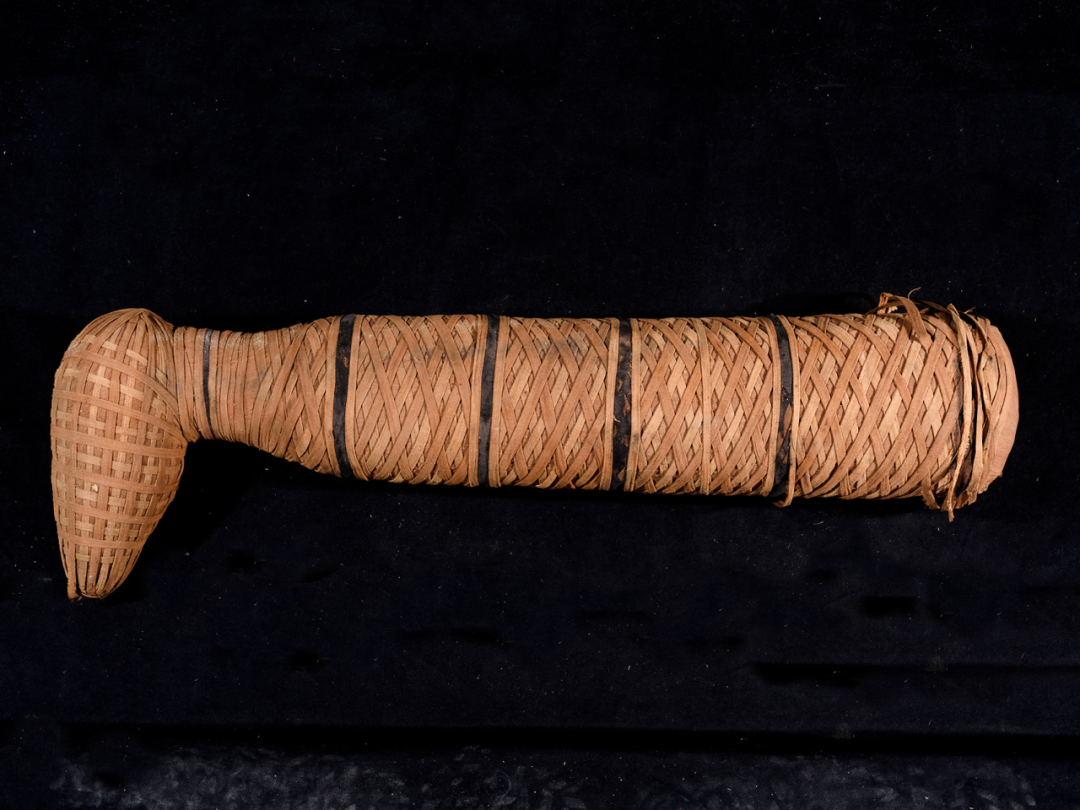
Cat Mummy, Late Egyptian (664-332 B.C.), Saqqara
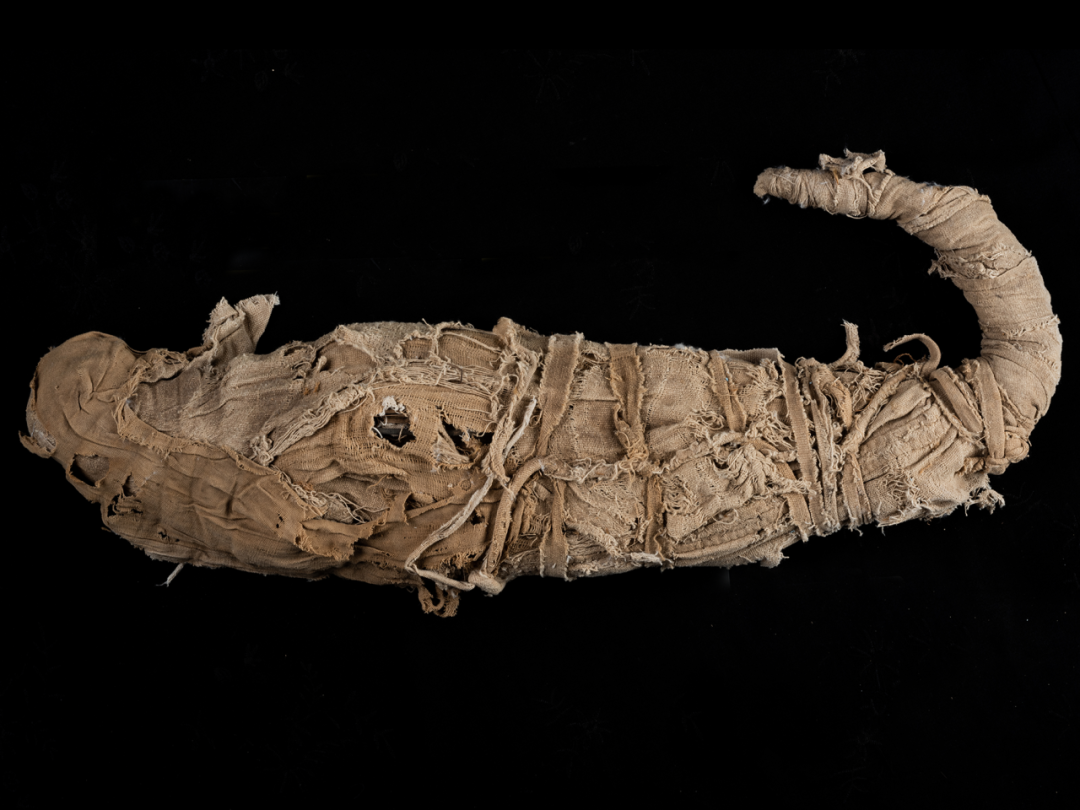
Crocodile Mummy, Late Egyptian (664-332 BC), Saqqara
"Secrets of Saqqara" will systematically publish for the first time the major discoveries made by the Egyptian archaeological team since they launched independent archaeological excavations in the Saqqara area, tracing the long trajectory of religious practice, including the worship of sacred animals, the worship of the cat god Bastet, and the funeral customs of cat god priests, and interpreting the cultural significance of Saqqara as a retro capital.
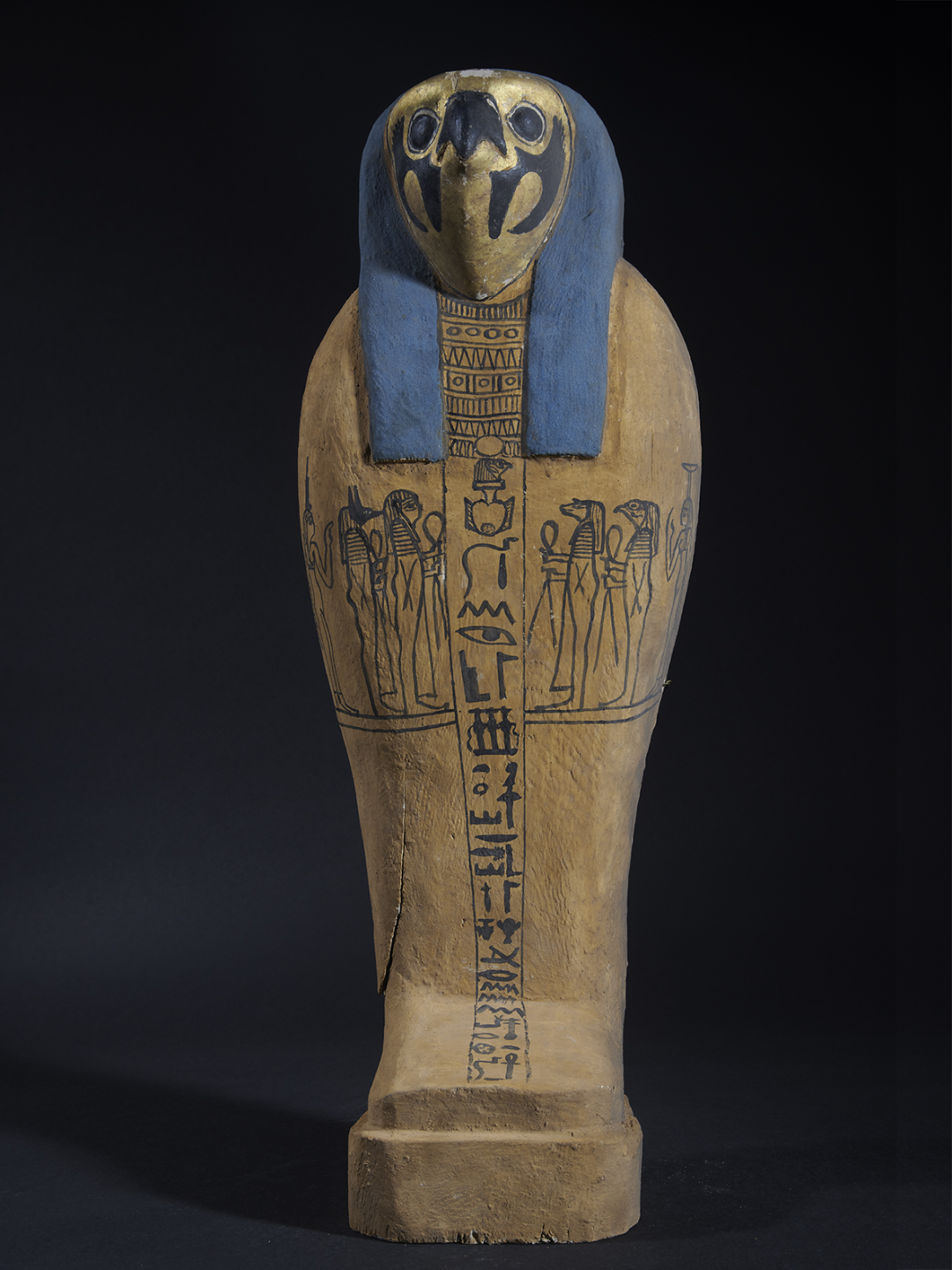
Painted wooden coffin model in the shape of an eagle head, wood, pigment, Late Egypt (664-332 BC), Egyptian National Museum
This exhibition hall incorporates "youth-friendliness" into its design principles, lowers the height of display cabinets and display belts, designs touchable cultural relics models, dynamically interprets the two sides of the cat god, and creates a montage temple of the cat god, in order to arouse the audience's imagination through a combination of virtual and real scenes.

Painted panel, Cartonnage, Late Egypt (664-332 BC), Saqqara

Painted humanoid coffin, wood and pigment, Late Egypt (664-332 BC), Saqqara
Section 3: The Age of Tutankhamun
The young pharaoh Tutankhamun made a sensation in the world in 1922 with his tomb. Over the past 100 years, archaeologists, linguists, and historians have restored the life of the young pharaoh in more and more detail. When we recognize the king's name chiseled off from the statue, the turbulent times of the past reappear through the dust of history.
"The Age of Tutankhamun" starts with the background of the Mediterranean region entering the imperial era in 1500 BC, traces back to the development of the belief in the god Amun and the religious reform of King Akhenaten of the 18th Dynasty - this is a division between polytheism and monotheism, and then pushes down to the return of traditional religion under the rule of the young Tutankhamun and its influence on later generations. The exhibition narrative is integrated with the rhythmic exhibition hall space. The audience will enter the surround image space through a narrow corridor, witness the life ceremony of the young pharaoh, and empathize with the separation of life and death in the 14th century BC; and the blank space near the large statue attempts to restore the magnificent scene seen from the inside of the building overlooking the outside desert, and leave enough space for the statues of the two pharaohs to look at each other.
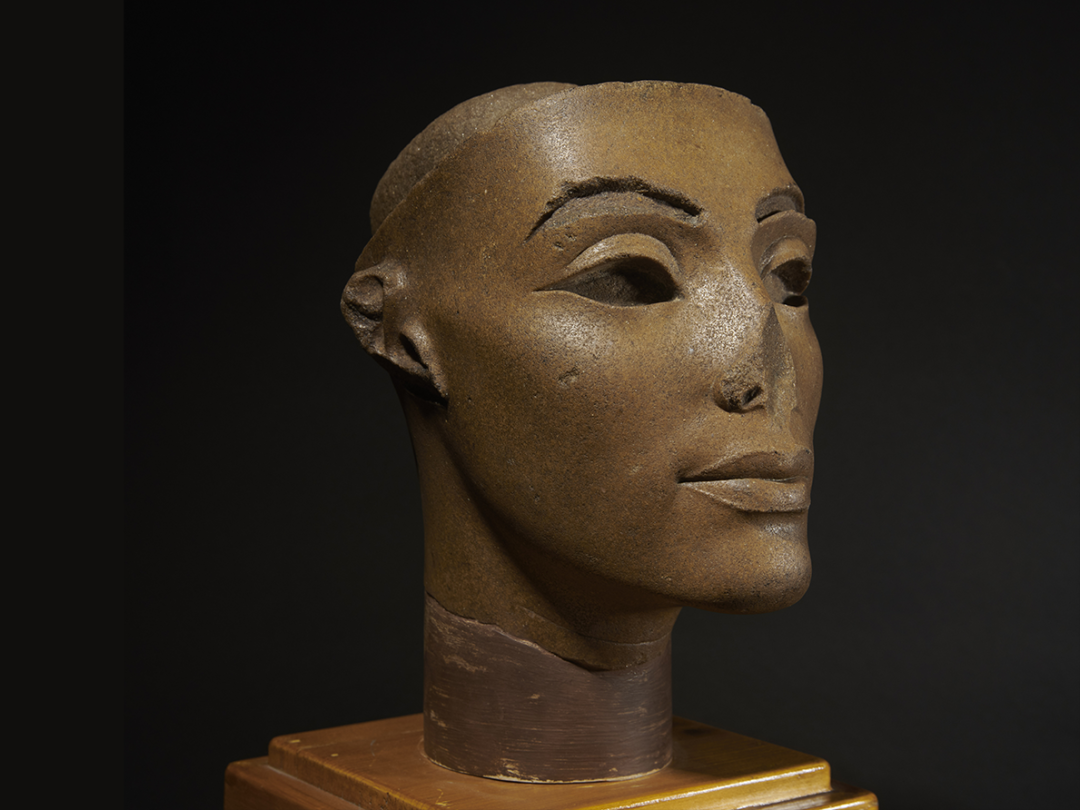
Head of Nefertiti, quartzite, 18th Dynasty (1550-1295 BC), Egyptian Museum

Quartzite statue of Tutankhamun, usurped by Aye and Hellenbu, quartzite, pigment, 18th Dynasty (1550-1295 BC), National Museum of Egypt
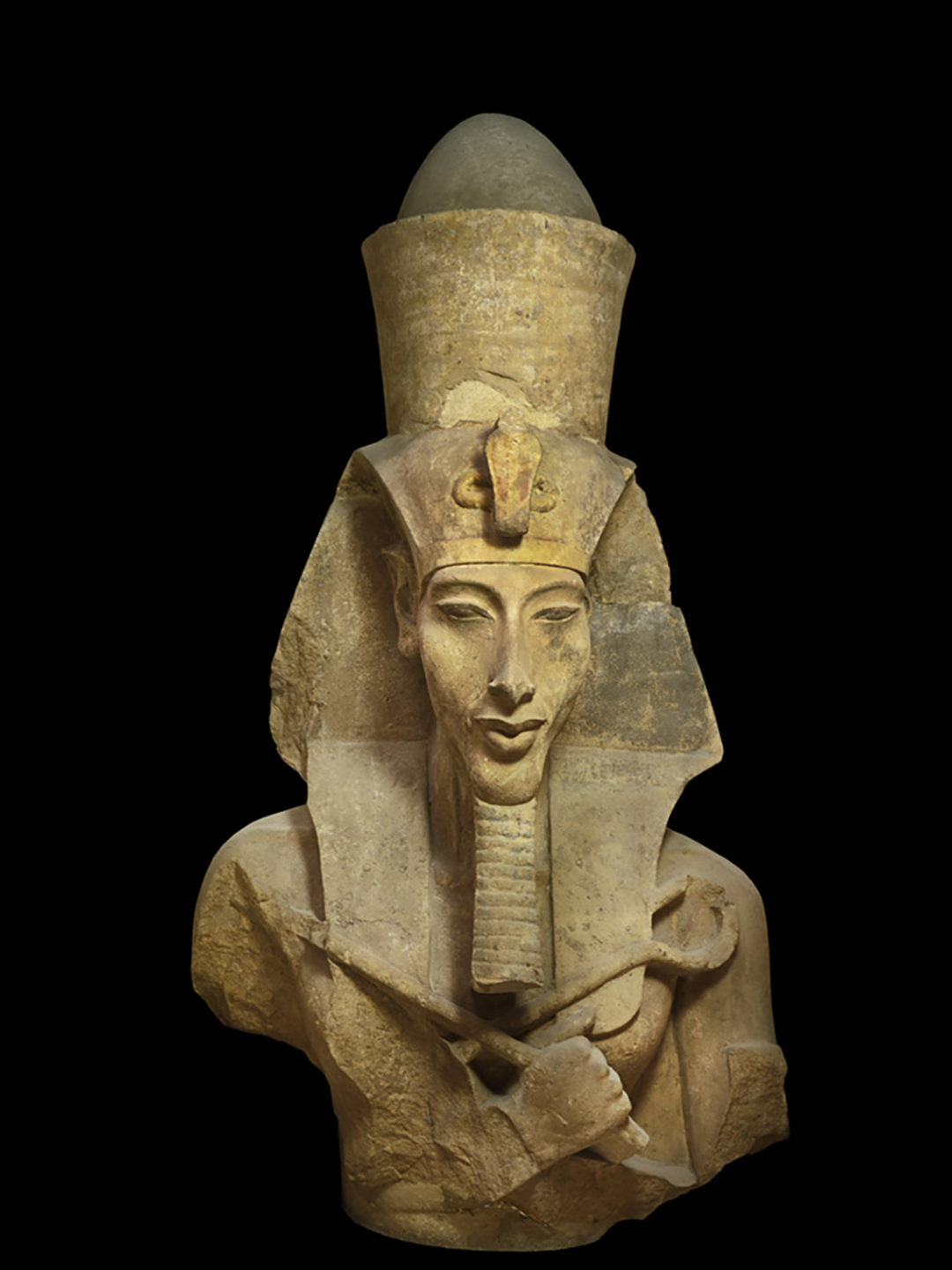
Colossus of Akhenaten, sandstone and pigment, 18th Dynasty (1550-1295 BC), Egyptian National Museum

Nefertiti relief, limestone, 18th Dynasty (1550-1295 BC), Egyptian National Museum

Painted vase decorated with lotus, wood and plaster, 18th Dynasty (1550-1295 BC), Egyptian National Museum
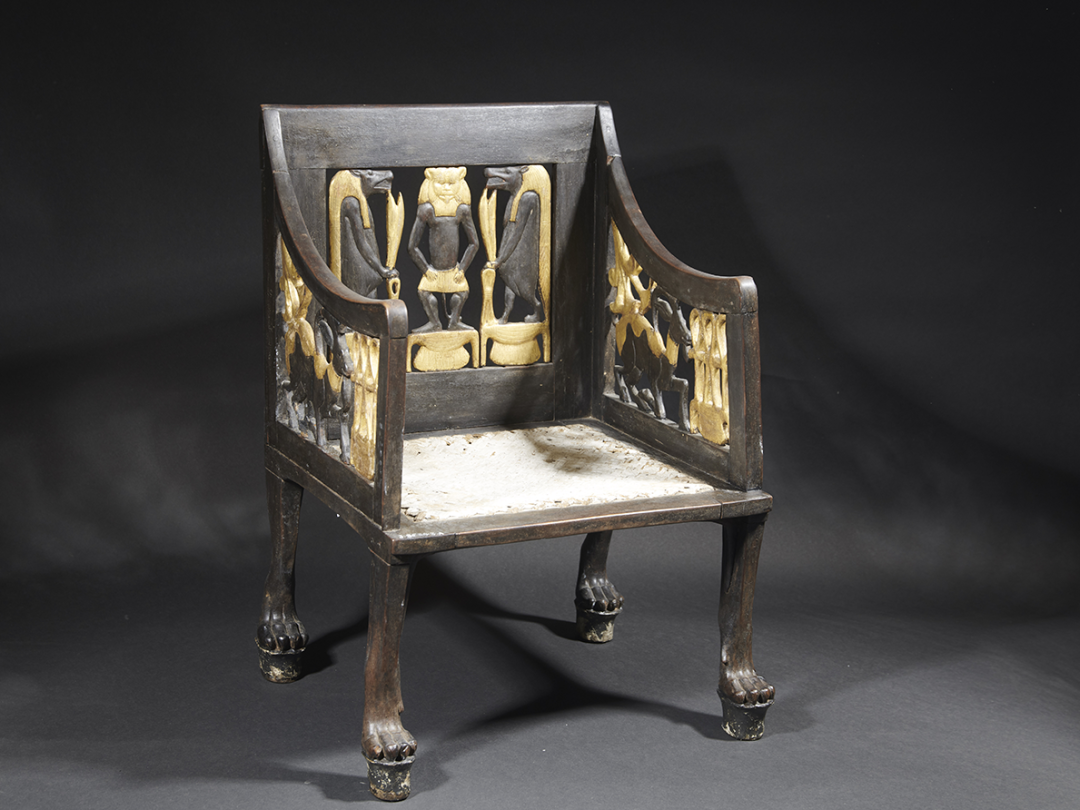
Chair with the image of the god Bes, wood, pigment, silver, 18th Dynasty (1550-1295 BC), National Museum of Egypt

Box decorated with gold, ivory and fayous, bearing the names of Amenhotep III and Queen Tiye, wood, fayous, gold, ivory, 18th Dynasty (1550-1295 BC), National Museum of Egypt

Hand-shaped ivory castanets, ivory, 18th Dynasty (1550-1295 BC), National Museum of Egypt

Fayence Blue Crown, Fayence, 18th Dynasty (1550-1295 BC), National Museum of Egypt
Appendix: Guide to Visit Reservation and Ticket Purchase
Tickets for this special exhibition will be sold through the Shanghai Museum's official WeChat applet, on-site ticket offices and Ctrip.com. Tickets will be available in a variety of types, including early bird tickets, full-price tickets, designated day tickets, discount tickets, and family tickets. Visitors can make real-name reservations on the Shanghai Museum's official reservation system within 14 days before the opening of the exhibition (starting from July 6). Visitors who successfully purchase tickets can obtain a special exhibition pass QR code and a ticket to the permanent exhibition on the day. On the day of the visit, they can visit the permanent exhibition and special exhibition with their original ID card.
For more information on visiting, ticket purchasing and activities, please pay attention to the follow-up content released by the Shanghai Museum’s official WeChat account, Weibo, website, etc.
